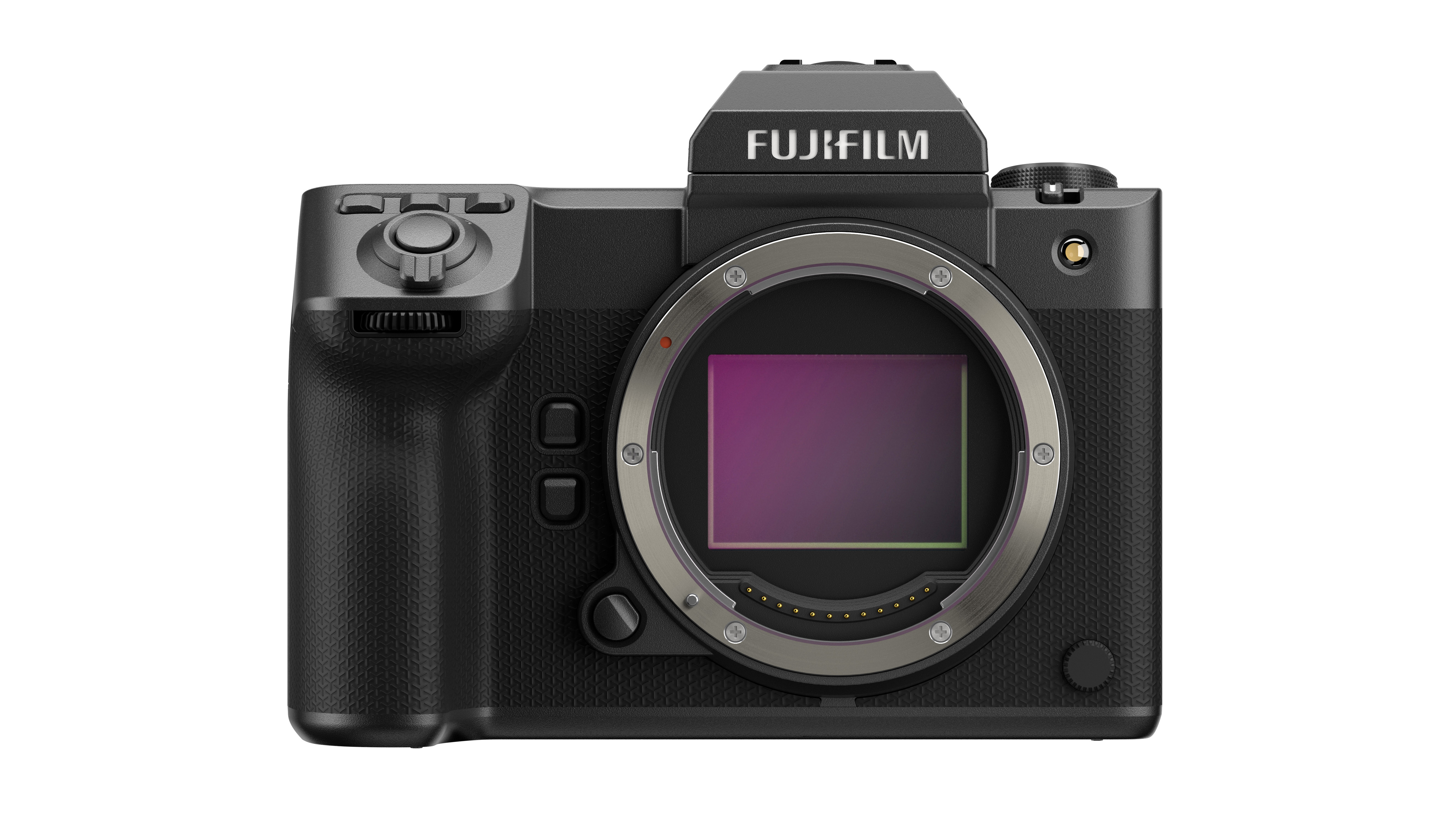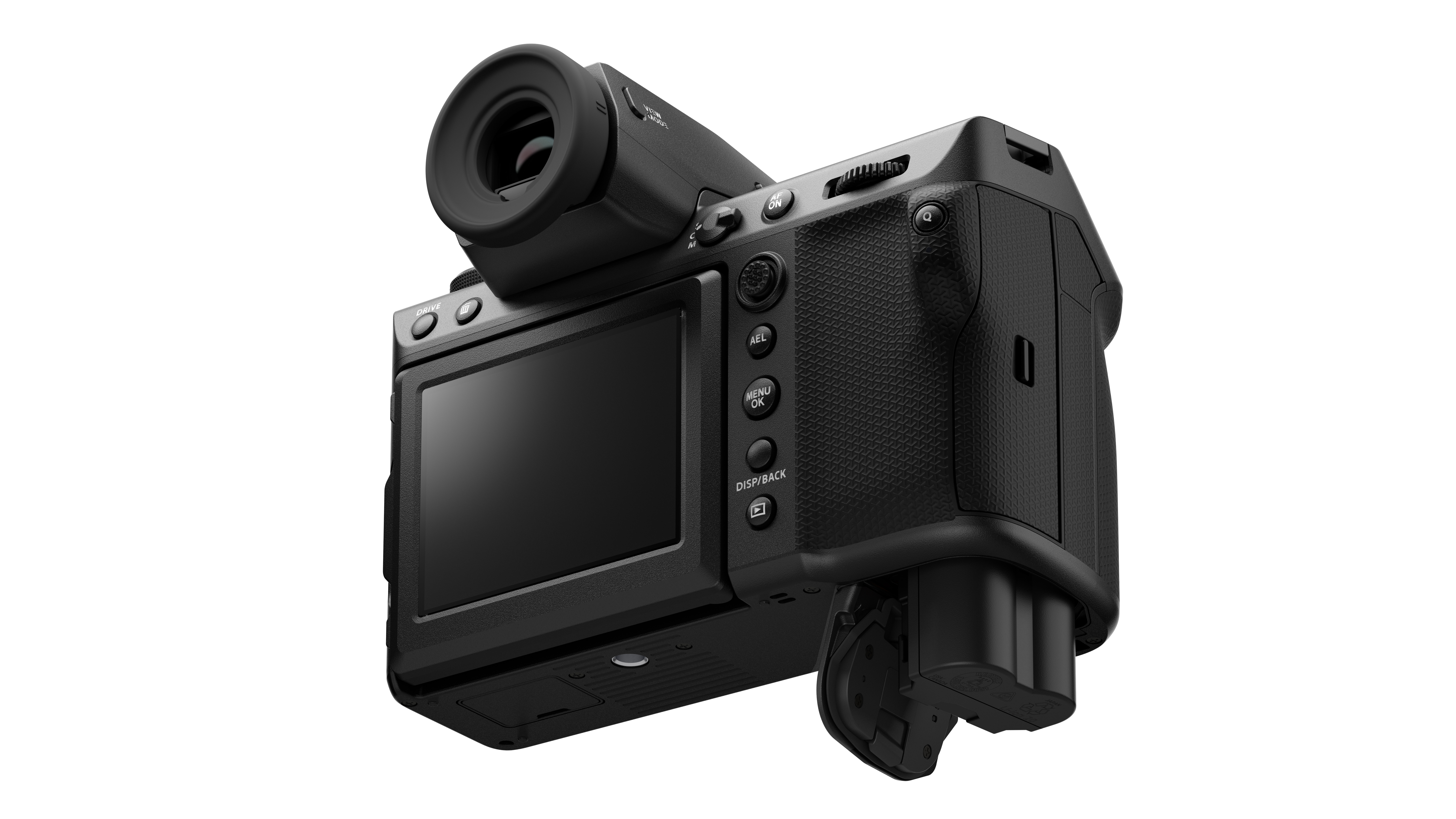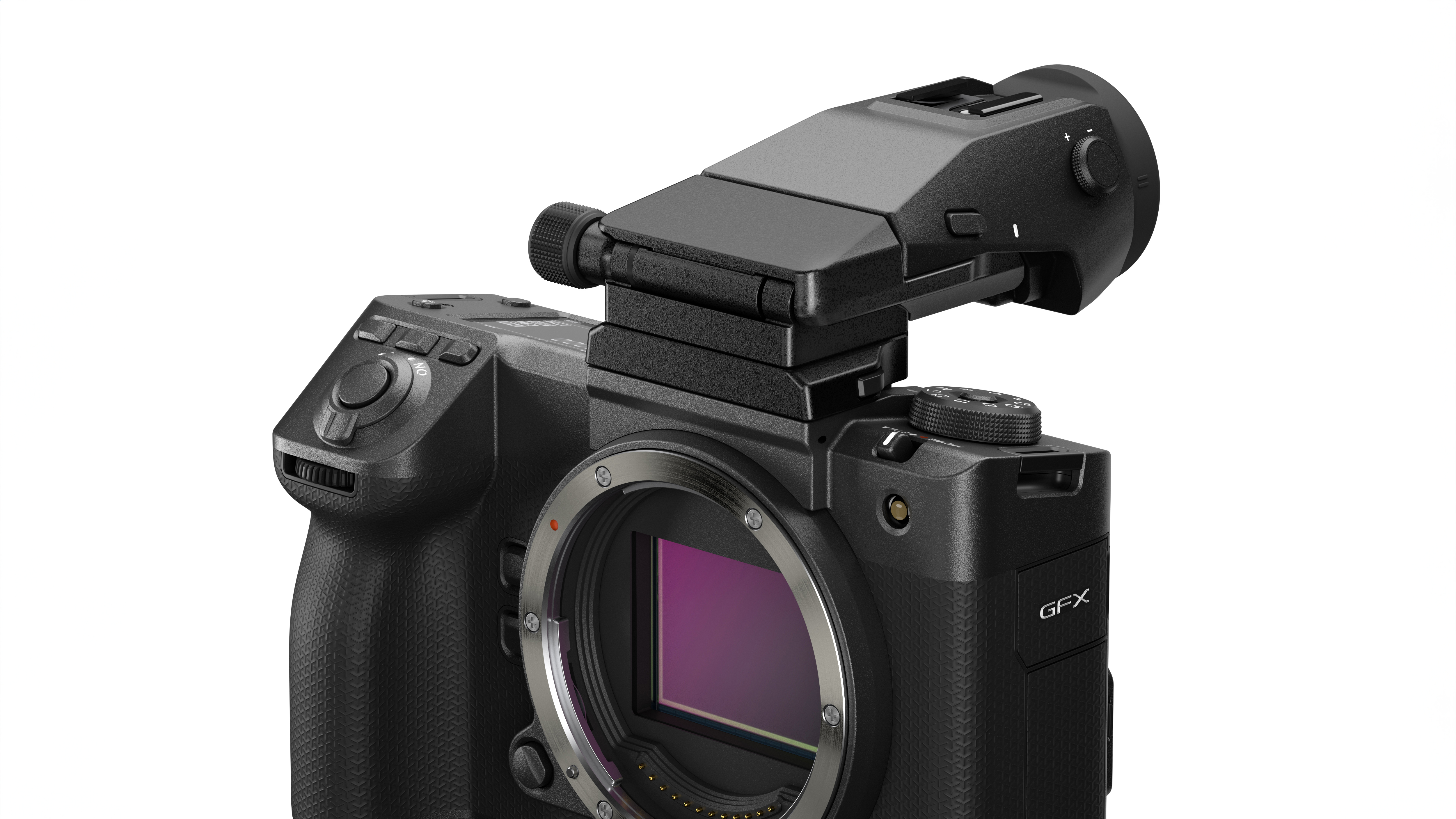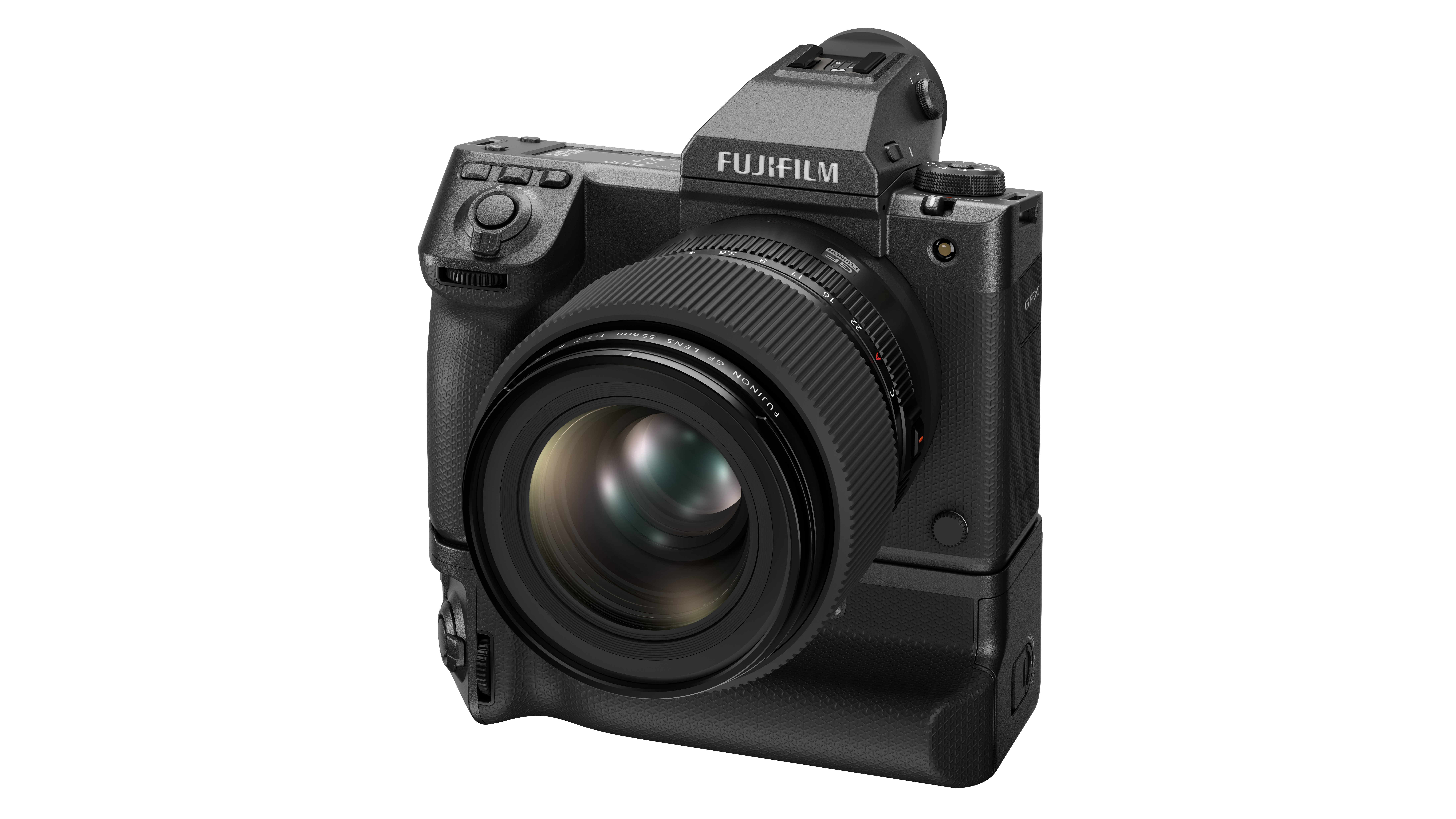Fujifilm raises the bar for medium-format cameras with the GFX 100 II
Fujifilm brings its latest X-Series developments to medium format pushing the GFX 100 II to new heights

Everything but the kitchen sink is the saying that comes to mind when looking at the specs sheet for the new Fujifilm GFX 100 II. It might be faster to discuss what Fujifilm didn’t squeeze into its latest medium format flagship. Fujifilm made clear in its presentation that this is the camera to make full-frame users think twice about using two systems, and it makes that point pretty well.
The Fujifilm GFX 100 II is built around a brand new high-speed 102-megapixel CMOS sensor, paired with a new custom version of the company's latest X-Processor 5 which has been utilized to great acclaim in the latest X-Series cameras like the Fujifilm X-H2S. This new sensor/processor combo allows the GFX 100 II to output a staggeringly fast (for medium format) 8 frames per second with continuous autofocus at full resolution. This is combined with a buffer size of twice the previous model with up to 325 shots in RAW or 75 shots in RAW+JPEG.

See our preliminary hands-on Fujifilm GFX 100 II review
The GFX 100 II can shoot in 16-bit HQ RAW, HEIF 10-bit, and JPEG, with files offering over 30% more dynamic range than the previous model with a new base ISO of 80. The GFX 100 II is also capable of 400-megapixel Pixel Shift images made up of 16 combined RAW images, and now can use just four images to achieve a true color image.
Fujifilm has also added a 13th (or 20th if you count variations) of film simulation with the Fujifilm Reala Ace film, which offers a lower saturation than standard Provia but maintains a neutral tone.
The autofocus has also been improved to take advantage of the latest subject recognition and tracking algorithms from Fujifilm, including humans, animals, vehicles, and insects. There has also been additional development for The GFX 100 II’s human face and eye recognition with this camera's interest to portrait photographers. The GFX 100 II now has up to 8-stops of in-body image stabilization when used with compatible lenses.

Video
When it comes to video, the GFX 100 II is capable of 4K60p 4:2:2 10-bit video internally with no crop, as well as 8K24p with a 1.42x crop, or 8K30p with a 1.51x crop, and Full HD up to 120p.
Get the Digital Camera World Newsletter
The best camera deals, reviews, product advice, and unmissable photography news, direct to your inbox!
Recording is possible in Apple ProRes as well as Fujifilm’s F-Log2 to reach 13+ stops of dynamic range, which can be pushed to 14+ stops in D Range Priority, however, this limits the video to 4K30p with a slight increase to rolling shutter. Further recording including ProRes RAW or Blackmagic RAW can be attained using external recorders.

Recording times, which has been a bane for other cameras, at 4K30p the GFX 100 II can record for 38mins in 40-degree (ºC) heat and 151 minutes in 25 degrees, but when combined with the Fujifilm FAN-001 cooling fan, at 25ºC there is no limit on the recording. What’s more the GFX 100 II can also record directly to SSD in all video formats for faster offloading during projects.
The GFX 100 II is making a serious play to be the camera choice for video professionals with a range of high-end features including IDT support (the cinema standard color space), focus mapping, vector scope, and waveform directly available in live view. The GFX 100 II’s new ‘Video Format’ is also able to adapt its video size based on which cinema lens is attached (using an adapter), using different areas of the sensor for example a Fujinon Premista lens or a Zeiss lens.
Body & design
The body is a fairly significant departure from the original Fujifilm GFX 100, ditching the integrated grip, and falling in line with the more recent GFX 100S and GFX 50S II bodies. However for anyone missing the vertical grip, the GFX 100 II does have an optional VG-GFX II vertical battery grip with additional controls on the grip, but this will be sold separately. And speaking of batteries, the GFX 100 II will use Fujfilm’s NP-W235 battery which should give around 540 frames (a 20% improvement on the GFX 100) or 60 minutes of 4K30p recording.

The GFX 100 II uses the EVF-TL1 detachable and tilting eyelevel viewfinder with a 9.44m dot resolution, a variable magnification of up to 1.0x, and up to 120p refresh rate. The camera also features a 2.09-inch top monitor and a 3-in 9.44m-dot three-way tilting screen on the rear. Otherwise, the layout is very familiar from the original GFX100, with the addition of three new custom-function buttons near the shutter.
The GFX 100 II finally gets an upgrade to a CFExpress card Type-B slot, which sits alongside an SD UHS-II card slot. For camera communication, the GFX 100 II features an ethernet cable port as well as direct wireless upload to Adobe’s Frame.io cloud.
Availability
The Fujifilm GFX100 II will be available on September 26 but is available to pre-order now from retailers, with a price of $7,499 / £6,999 / AU$12,599. This places the GFX 100 II at around $1500 more expensive than the GFX 100S, although comes with a significant raft of improvements, and is $2,000 cheaper than the original GFX100, although to get the same ergonomics you do need to add on a separate vertical grip.
The GFX 100 II is a replacement for the original GFX 100, but the GFX 100S will still continue to be sold as a more affordable option.
Interested in finding out more about medium format? Check out our top picks for the best medium format cameras. You can also find our guides to the best Fujifilm cameras and the best GF lenses.

Gareth is a photographer based in London, working as a freelance photographer and videographer for the past several years, having the privilege to shoot for some household names. With work focusing on fashion, portrait and lifestyle content creation, he has developed a range of skills covering everything from editorial shoots to social media videos. Outside of work, he has a personal passion for travel and nature photography, with a devotion to sustainability and environmental causes.
